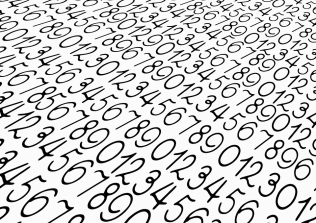 Numbers are deceptively simple. We use them everyday in a variety of contexts. It’s beautiful how there are so many mysteries hidden inside these numbers. Catalan’s Conjecture is a mathematical problem that’s really easy to understand, but extremely difficult to prove. In fact, it took around 158 years to come up with a mathematical proof. It was Preda Mihăilescu, the amazing Romanian mathematician, who came up with a proof in 2002. In solving these problems, mathematicians come up with profound ideas and formulations that impact many fields within mathematics. Let’s go ahead and peel this metaphorical onion, shall we?
Numbers are deceptively simple. We use them everyday in a variety of contexts. It’s beautiful how there are so many mysteries hidden inside these numbers. Catalan’s Conjecture is a mathematical problem that’s really easy to understand, but extremely difficult to prove. In fact, it took around 158 years to come up with a mathematical proof. It was Preda Mihăilescu, the amazing Romanian mathematician, who came up with a proof in 2002. In solving these problems, mathematicians come up with profound ideas and formulations that impact many fields within mathematics. Let’s go ahead and peel this metaphorical onion, shall we?
What is the conjecture?
This marvelous conjecture was proposed by the Belgian mathematician, Eugène Charles Catalan, back in 1844. It started with the concept of perfect powers. Perfect power refers to a positive integer multiplied by itself a certain number of times. For example, 81 is a perfect power because it can be expressed as 34 (3 x 3 x 3 x 3).
These perfect powers don’t usually appear consecutively on the number line. This means that if 81 is a perfect power, then it is very unlikely that 80 or 82 would also be a perfect power. Now being the curious cat that Catalan is, he asked the question — How unlikely is it? The more he thought about it, the more he realized that this is extremely unlikely. In fact, he said that it is so unlikely that 8 (23) and 9 (32) are the only consecutive perfect powers to exist on the number line. This is a pretty powerful statement!
What does it actually look like?
If you are feeling a bit mathematical, then Catalan’s Conjecture says that the only solution to the following equation:
am - bn = 1 for a, b > 1 and m, n > 0
is the following set of values:
a = 3, m = 2, b = 2, n = 3
Just for fun, you can try to see out if you can find any other numbers that can be a solution here. Spoiler alert, you can’t!
How did Mihăilescu prove it?
Since he proved the conjecture, it was renamed from Catalan’s Conjecture to Mihăilescu Theorem. Quite an honor! He used deep theoretical results from cyclotomic fields to prove it. What exactly are cyclotomic fields? A cyclotomic field is a number field with some special properties. A number field is a set of numbers that follow a set of predefined rules. Number fields are used extensively across many branches of mathematics, physics, and engineering.
Now, it’s difficult to explain cyclotomic fields in this blog post without discussing the complex roots of unity and talking about the difference between primitive and non-primitive roots. So let’s just say that cyclotomic fields are really crucial in number theory because of their properties. He used the properties of cyclotomic fields to prove that 8 and 9 are in fact the only two consecutive perfect powers on the number line.
What’s the point of proving it anyway?
Okay he proved the 158 year old conjecture. So what? It’s not like we can use it anywhere, right? Well, that’s not true. Even though the conjecture looks plain and simple, the underlying mathematics that was employed to prove this conjecture is exquisite. Cyclotomic fields are used extensively in algebraic number theory. A lot of these ideas and tools make their way into engineering, design, and construction of a variety of real world systems. The beauty of number theory is that it embraces almost everyone with welcoming arms, but whispers its elegant secrets to the chosen few.
—————————————————————————————————————————————–
Nice, there are several other mathematical mysteries which are proved in last 100 years. However, not sure where exactly the catalan’s conjecture is used in engineering?
Thanks, Rajesh. I was referring to the usage of the underlying tools in engineering (as opposed to the conjecture itself). In this case, it happens to be cyclotomic fields along with a couple of other formulations that were utilized in proving this conjecture.
Great, keep exploring the mysteries of mathematics. Not many people out there who would appreciate the beauty of it 🙂
Sure 🙂